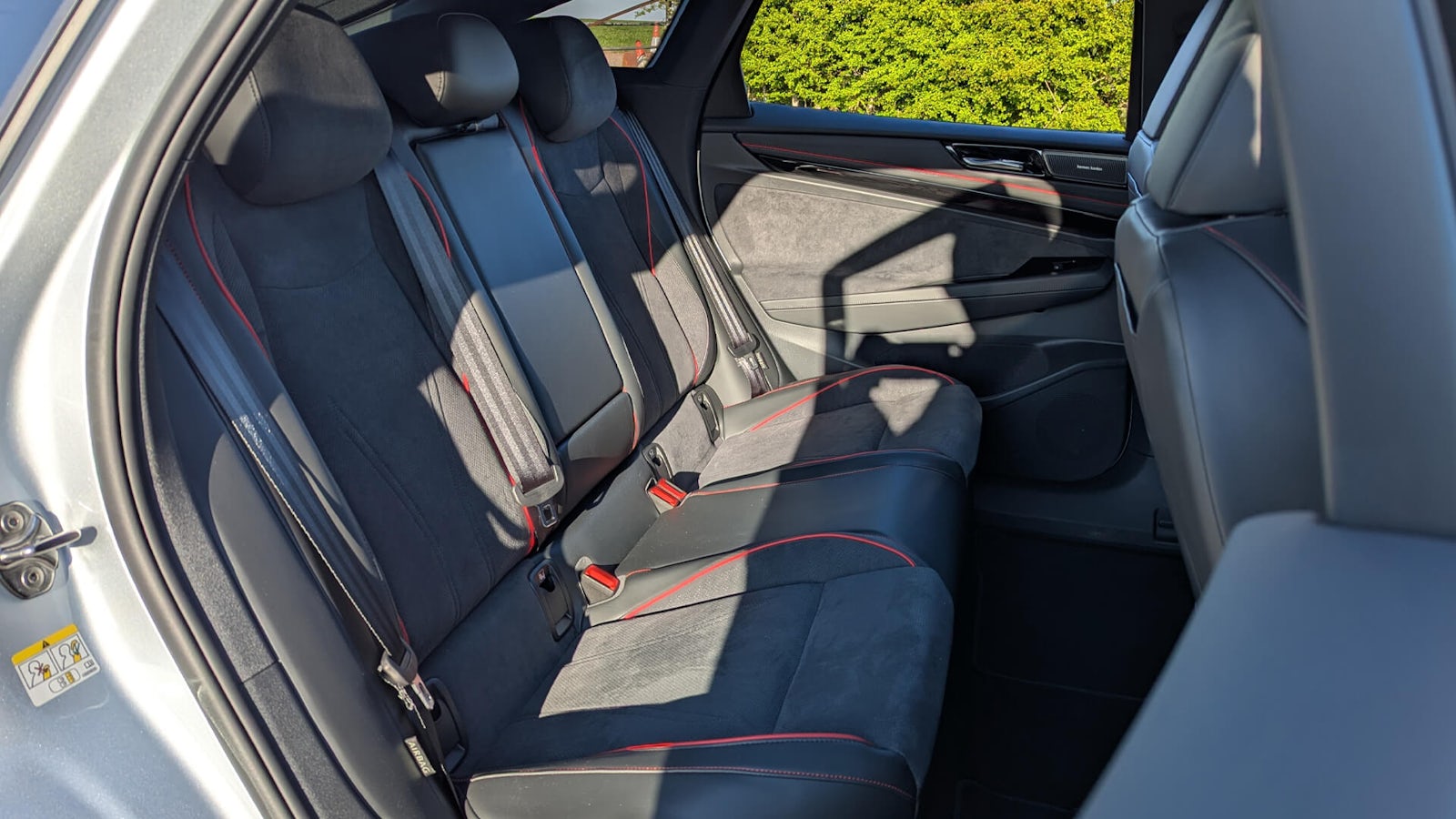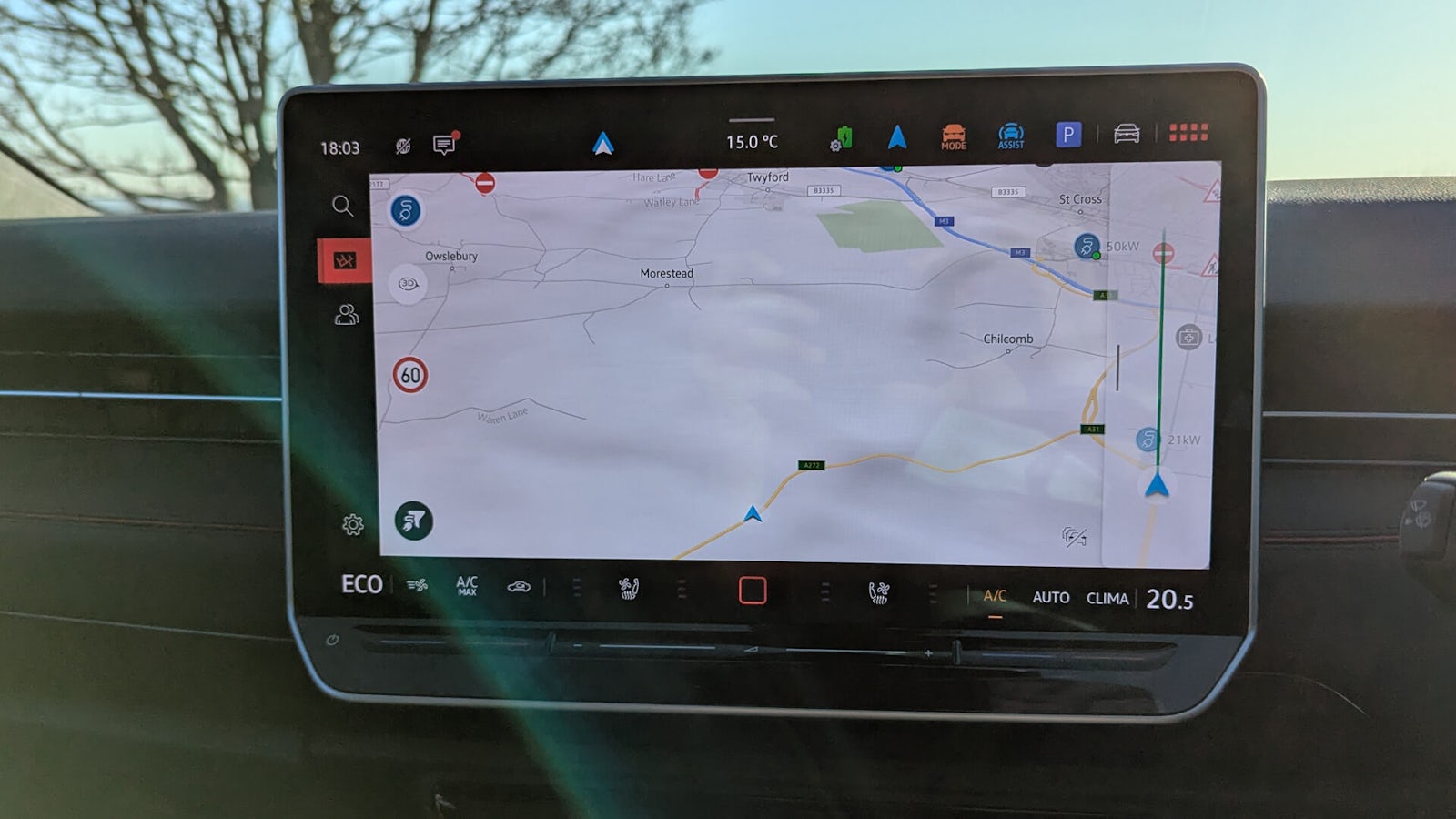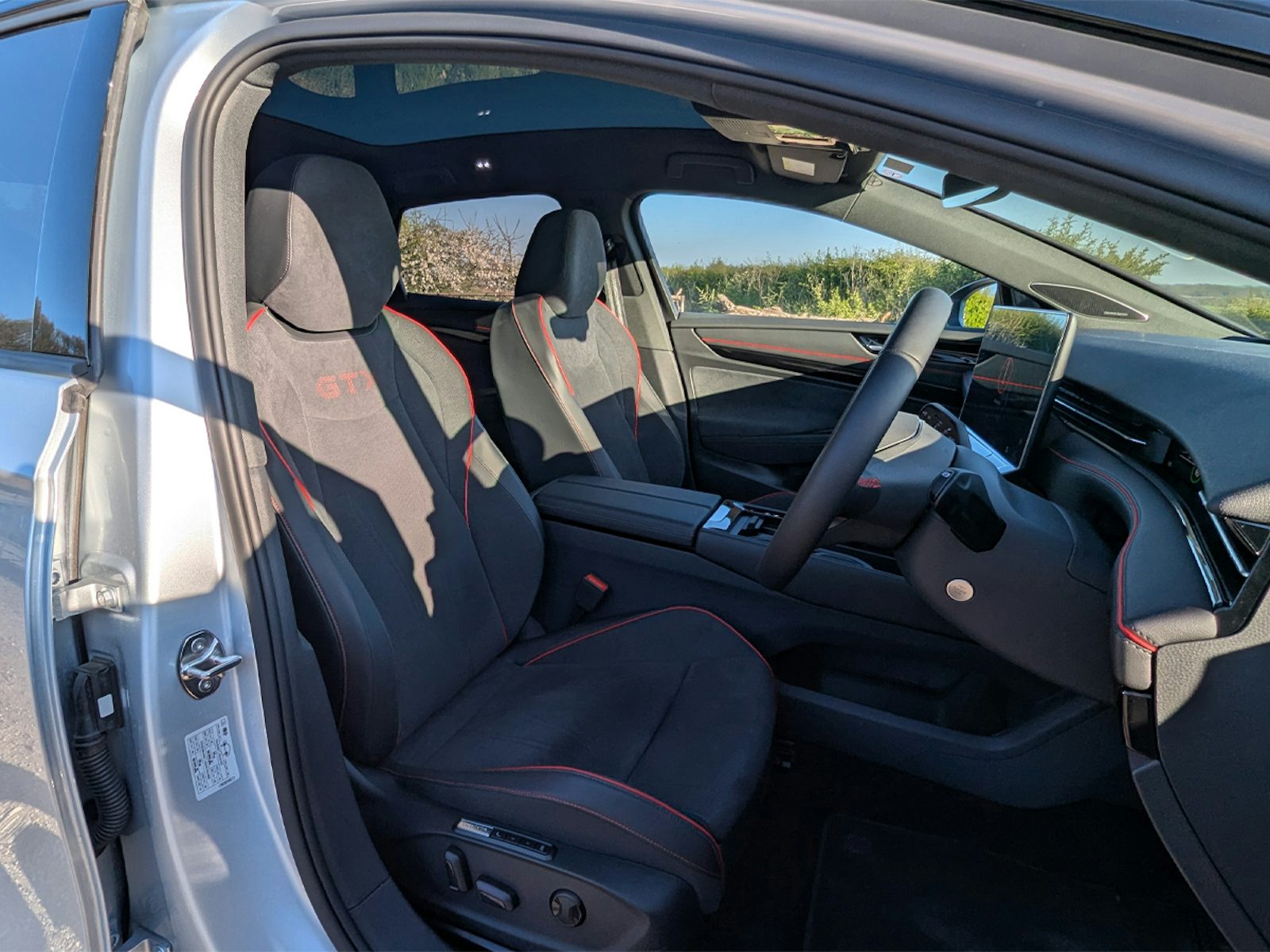Car changing is a big deal
Our Volkswagen ID7 GTX has been replaced by a single-motor estate version so we can find out which is the better buy.
We’ve spent the last three months living with a Volkswagen ID7 GTX – the fastest and most sporty version of the brand’s flagship electric car. It was a joy to run as a daily driver, however we were starting to question whether this was the best version to go for.
The GTX is supremely comfortable, relaxing to drive and it’s practical, but it just doesn’t feel as sporty as the name suggests. Sure, it’s pretty quick off the line, but there’s nothing about the way it drives which encourages you to chuck it down a country road. It’s much better-suited to being a laid-back cruiser.

And if that’s what the ID7 does best, why not save yourself a few thousand pounds and go for the Pro S? It’s just as smooth and comfy to drive as the GTX, but on paper it’s got much better range, and with better efficiency, should cost less to run, too.
So we’ve swapped our Volkswagen ID7 GTX for a Pro S model, and we’ve also taken this opportunity to sample the estate version for added practicality.

Other than the bodystyle, what are the key differences between this and our old GTX? Well the most obvious is under the skin. The Pro S is powered by a single electric motor on the rear wheels producing 286hp, whereas the GTX had dual motors with 340hp.
This does mean acceleration takes a hit. This car will do 0-60mph in 6.7 seconds, whereas the GTX took 5.4 seconds. So far we’ve not really missed the extra power though. The Pro S feels plenty nippy enough.

The other big difference is range, because the Pro S is meant to do 424 miles on a charge, according to official tests, which is around 65 miles more than the GTX. We’ve had our new Pro S Tourer for a few weeks now, and so far it’s showing a real-world range of around 344 miles, whereas the GTX was getting 292 miles on a charge. We’ll be keeping an eye on the efficiency over the next few months so see what it averages out at.
Our new ID7 Tourer is fitted with a few optional extras. First off are the 20-inch alloy wheels, an upgrade on the 19-inch rims you get as standard. They cost an additional £480. Then there’s the Exterior Pack Plus, something we also specced on our GTX, which adds adaptive dampers, an electronically-dimming panoramic roof, illuminated VW badges and thicker glass for better sound insulation. That pack will set you back £2,100.

Finally there’s the black exterior styling pack for £300, which includes black badges and a black roof. We think this looks great with our Stonewashed Blue metallic paint job – which, admittedly, isn’t looking its best in the photos here, taken after a weekend in a dusty field at the Goodwood Festival of Speed, sorry Volkswagen – and it brings the total cost for this car to £58,160.
That’s £3,850 less than our GTX, so is the Pro S Tourer the ID7 to go for? We’ll report back once we’ve had some more time behind the wheel.
Living with a Volkswagen ID7 GTX: third report – June 2025
We were running a Volkswagen ID7 GTX for a few months before the Pro S Tourer turned up. It’s the most sporty version, and we had the more swoopy-looking Fastback model as well. Read on for our thoughts on this performance-focussed EV, starting with how it drives.
Driving the Volkswagen ID7 GTX: things we like
Let’s start with the positives, and there are plenty of them. This is a properly comfortable car, even in sporty GTX trim.

It has adaptive dampers which you can stiffen up on a country road, but we just tend to run them in their softest setting so it soaks up bumps in the road. It’s also silent on the motorway, and a special mention goes to the seats, which have a massage function to keep your back from hurting on long trips.
The adaptive cruise control also works really well. The best systems are the ones you don’t notice, and the ID7s seamlessly keeps you bang in the centre of your lane and a safe distance from the car in front.

This is the most powerful dual-motor version, and the performance is decent. You have 340hp on tap, making short work of motorway slip roads. It’s not hair-raisingly fast, but it’s more than quick enough.
Out on a twisty road the ID7 remains comfy and composed. There’s plenty of grip, minimal body roll and the steering is nicely weighted, although it’s perhaps not as much fun as you might expect the sporty version to be. It’s just a big, relaxing cruiser.
Driving the Volkswagen ID7: a couple of niggles
It’s not all hunky dory behind the wheel of the ID7, but our first gripe is one which isn’t entirely the car’s fault – and that’s its size.
In photographs it looks like it’ll be the size of a normal saloon car, but it’s massive. Length is the main issue, because the ID7 is so long that it doesn’t fit into a lot of parking spaces.

For context, it’s over 400mm longer than a Volkswagen Tiguan, and it’s slightly wider than that car as well. Not having an SUV’s tall driving position can also make it tricky to thread through tight car parks, as one member of the team found out after losing an argument with a curb. It’s still worth giving the ID7 a go before buying to make sure you’re comfortable with its dimensions, and to check it’ll fit on your driveway.

It’s not the most energy efficient EV either. We’ve been averaging around 3.3 miles per kWh, which works out to 284 miles of real world range. That’s 80 miles off the official claimed figure, and it was worse when the weather was colder.
In the winter months we were seeing more like 2.6 miles per kWh, which equates to 224 miles on a charge. We’re swapping into a single-motor rear-wheel drive version of the ID7 soon, so it’ll be interesting to see how the efficiency compares.
Second report: interior and practicality – May 2025
So what’s this sporty-looking electric car like inside? Here are a few thoughts on the interior.
Volkswagen ID7 interior: things we like
Having covered around 2,000 miles behind the wheel of our ID7, there are a few things which we really like. Here are three examples.
The seats are great

This is a long-distance cruising machine, and it has the chairs to go with it. They’re really supportive without being too grippy, and the seating position is spot on. We’ve also loved having the massage function, which has an “activation mode” to keep your back from aching after hours behind the wheel.
It’s insanely spacious
Over the past few months we’ve been ferrying family and friends around in our ID7, and almost everyone has commented on how palatial it is in the back seats. Even with the driver’s seat set up for a 6’3” adult there’s loads of space behind, and the boot is massive as well.

Having such a big boot can cause issues with things rolling around, but the ID7 has a few hooks and cubby areas to wedge things in. There’s also two layers of underfloor storage which is handy for keeping the charging cables out of the way.
It feels like a properly premium product

At £65,000 you’d certainly hope this car feels posh inside, and it does. There’s nice leatherette on the dashboard, everything feels really solid and we like the ambient lighting. An Audi A6 Sportback e-tron costs around £10,000 more than the ID7, and to be honest we’re not sure it feels £10,000 more expensive.
Volkswagen ID7 interior: things we don’t like
We do have a few bug bears to report in the ID7, here are three things which get on our nerves.
The climate controls
All of the ID7’s climate controls are routed through the touchscreen, which makes them fiddly to operate on the move. This is a gripe we have with a lot of Volkswagen products, but it’s particularly egregious in this one because you have to move the vents through the screen as well.

It’s made worse by the fact the vents default to the same position every time you get in the car, and that position has them blowing ice cold air right onto where your hand is. Prod at the screen in slightly the wrong place and you’ll shut the vent completely. Just give me a toggle, please.
Shiny plastic everywhere

Keeping this car’s dashboard clean is a nightmare thanks to all the shiny black plastic, and Volkswagen seems to have put it in all the places you touch all the time – like the door handles and around the cup holders. The touch-sensitive panels on the steering wheel also attract fingerprints.
Naff window switches

There are no rear window switches on the driver’s door – instead you get a button which changes the two front switches to operate the back windows. This isn’t a bad idea in theory – you may quite often go for the rear windows by accident – but in the ID7 it’s a touch sensitive button which we keep brushing when we don’t mean to. It’s a decent idea in our opinion, it just needs to be a proper button.
Living with a Volkswagen ID7 first report: introduction – April 2025
This is our Volkswagen ID7 GTX, a big, posh electric car which we’ll be living with for a few months.

It’s powered by a pair of electric motors putting out a combined 340hp, and it’s good for 0-60mph in 5.4 seconds. It’s also fitted with a rather large 86kWh battery, and the claimed range is 366 miles. It’ll be interesting to see how close it can get to this figure, and we’ll also be swapping into a rear-wheel drive version halfway through to see how that compares

This car is finished in “Scale Silver Metallic” paint with a contrasting black roof, and it’s a no-cost colour option. We reckon it looks pretty sleek, but it’s perhaps not the most exciting colour. The 21-inch alloy wheels fitted to our ID7 will set you back £620 over the standard 20-inch rims.

Step inside and you’ll find GTX sports seats which are heated, ventilated and massaging, and you also get heated rear seats. There’s also a premium Harman Kardon sound system, and most of the cabin controls are routed through the massive 15.0-inch touchscreen.

As for options fitted to this car, we have the “Exterior Pack Plus”. It costs £1,100 and includes adaptive dampers to improve both comfort and handling, a power tailgate and a clever sunroof which can darken at the touch of a button. A strange collection of features to bundle together, but we reckon it’s worth having.

Our car also has a retractable tow bar for £1,050 and a three-pin charging cable which could prove handy in a pinch for £190. This brings the total cost of this ID7 GTX to a rather hefty £64,970. That makes it around the same price as a mid-spec Polestar 4 or an Audi A6 e-tron, two cars with a slightly posher brand image than the VW.

The single-motor ID7 Tourer we’re swapping into will be getting on for £8,000 cheaper than this, so it’ll be interesting to see how the two compare. Keep an eye on this page for all the latest updates.
Car change? Carwow!
Looking for a new set of wheels? With Carwow you can sell your car quickly and for a fair price – as well as find great offers on your next one. Whether you’re looking to buy a car brand new, are after something used or you want to explore car leasing options, Carwow is your one stop shop for new car deals.
Click here to follow us on WhatsApp, where you can keep up-to-date with all the latest news, reviews, advice guides and videos.
